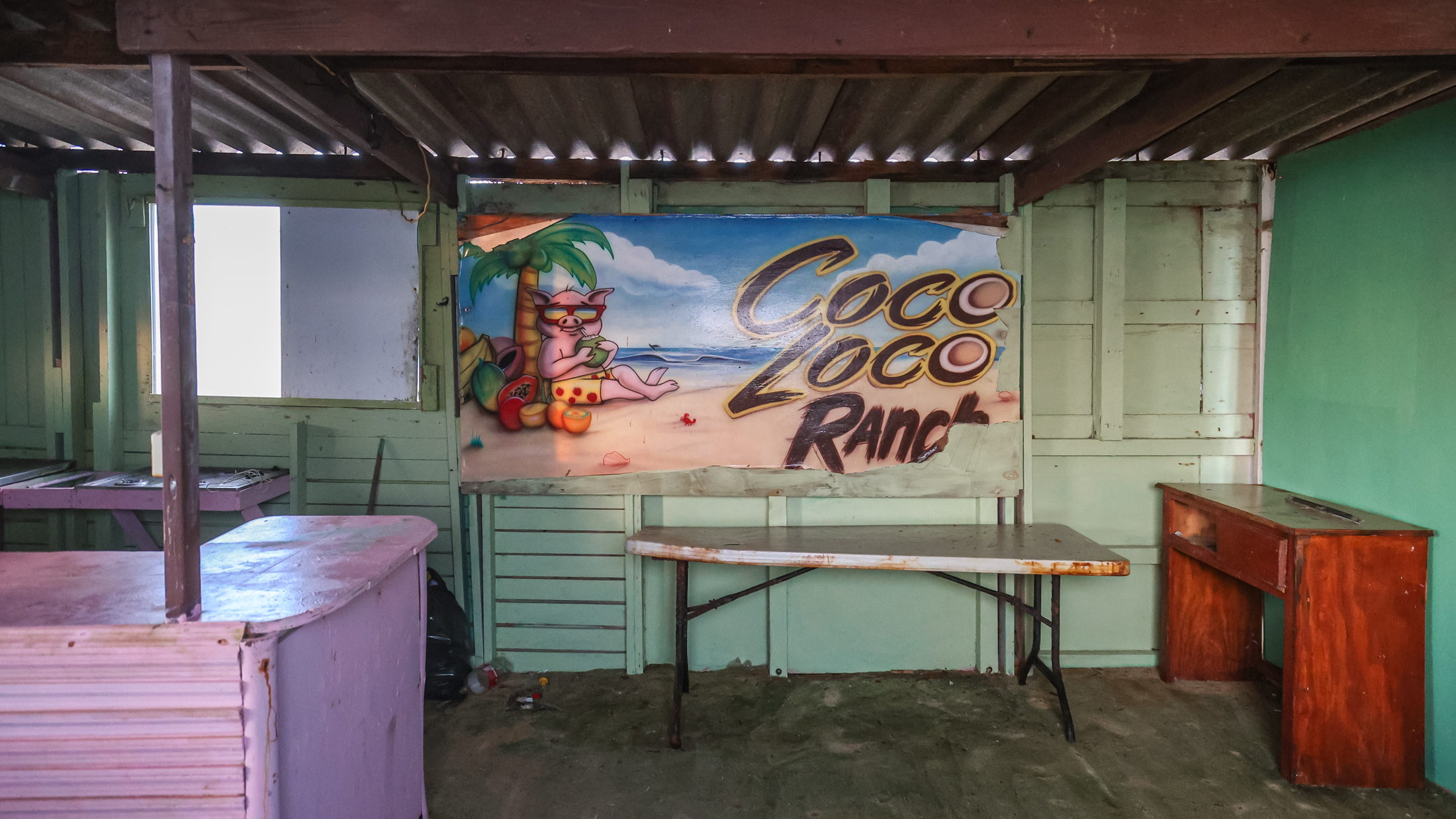Rincon Beach Cabins

Sitting along an infrequently visited beach on a distant corner of the Caribbean island nation of Aruba is a collection of shacks built from scavenged and salvaged materials creating a colorful ghost town beside the cerulean blue waters.
In a sense appearing odd and slightly eerie, the shoreline of Aruba’s Rincon Beach is lined with waterfront buildings that sit empty and sometimes varying in different stages of prolonged decay and collapse that is the result of a unique combination of cultural and geographical factors.

Built as weekend fishing cabins, the range of permanence in materials and construction skills accounts for the diversity of the shacks’ conditions today. While some were built with second floors and decks, elevated water tanks, sunken foundations and well-enclosed walls, many other cabins were built with found materials like plywood, discarded pallets, vinyl billboard banners and mismatched swaths of carpet. The nicer cabins were built with wooden floors, however the number of these is far less than those made up just walls constructed upon exposed sand.
With most of Aruba’s population centers and tourism concentrated in the island’s northwestern area, Rincon Beach sits along a mostly undeveloped stretch of landscape, sharing the picturesque southeastern portion of the island with an energy-generating wind farm and the island’s only prison, Korrectie Instituut Aruba. The island nation (a constituent country of the Netherlands) is small, occupying only 69 square miles. Central to its style of architecture is that the island lies outside of the hurricane belt of the Caribbean – the last time the island was severely impacted by a hurricane being in the late 1800s. With the Caribbean’s annual hurricane season typically resulting in little more than larger than usual waves and rainstorms, it’s not uncommon to notice housing throughout the island that tends to look surprisingly unreinforced to someone used to western building standards.

Camping is also not permitted in Aruba. The island, including Arikok National Park, contains no public or private campgrounds and does not permit camping for locals or tourists. The single exception to this is during the annual Holy Week leading up to Easter, or Semana Santa, when locals will often camp, returning to the these cabins during that time.
Signs and remnants of the festive environment around this week of camping are visible. Shacks contain wooden bars, covered patios, bedrooms, large open gathering floors, tables made of wood and old industrial spools – all in varying states. Couches, bed frames, stools and other furnishings can sometimes be seen, however most of what remains is weathered if not completely shredded and torn. There are no signs of bathrooms or plumbing of any kind beyond what is left from the rooftop water tanks.

Most cabins and shacks are painted in bright colors, several still boast the “ranch” name given to the property by the builders.
It’s unclear when these were built. Despite being about a 25 minute drive from the capital and tourism center of Oranjestad, those historical museums we questioned had little – and sometimes none at all – knowledge of the cabins’ existence or history. The nearer city of San Nicolas, despite their efforts to rebrand themselves as a vibrant community with tourist appeal, tends to retain its grittier image as a working and industrial colony based around the refinery and not quite able to solidly launch its tourist economy centered around the picturesque and often overlooked Baby Beach.



























8g76p6
blh5s2
9wfxbe
33lnkf
i2cgax